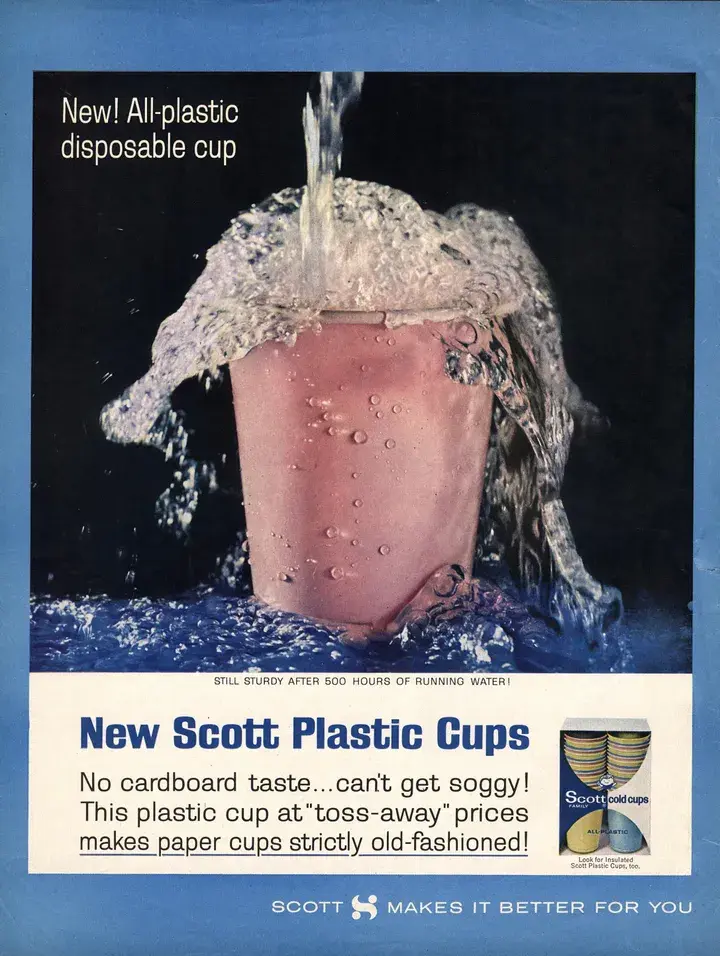Recycling Is Overrated: Why Has It Failed?
- Alex Eaves
- Jun 6, 2024
- 4 min read
Updated: Jun 25, 2024
As I wrote about in my previous posts about recycling, people still focus on it, yet this supposed godsend to our waste problem has failed. But before we can move forward, we have to look backward.
The concept of waste around the world is nothing new and solutions of what to do with it have always been there. It's just that these days, the amount of waste is astronomical, especially in the United States. The U.S. is the number one country in the world as far as the amount of waste per person, per day goes. The average American creates 5.69 pounds of waste per day. Hooray for being number one?
One thing I always say is that the reuse solution that I've promoted through my brand and movies is nothing new. My parents and their parents grew up reusing. It was common place. Words like "single use", "disposable", and "recyclable" simply did not exist. Items like bottled water, fast fashion, and particle board furniture did not exist. People used things until they were worn out. Items were repaired. Clothing was mended. The earliest thrift stores were open over 100 years ago. And during World War 2, there were numerous campaigns for households to donate "waste" to be reused for various war efforts.

But in the years after the war and as the U.S. economy grew, the 1960's came along and the use of plastic exploded. The disposable society that most of us have known for years was born and the concept of throwing things away became the norm. People began to love the convenience of just being able to "toss-away" their waste. (I find it interesting that this coincided with the era of peace and love for our fellow humans.)
In the 1970s, people began seeing that all of these "conveniences" were filling up the landfills. "Away" wasn't as far off as they thought. Many cities began burning trash, but inevitably, people saw the pollution that was being created. Curbside recycling programs began popping up as a way to appease that convenience for single use items. People also began seeing the economic benefit of taking things out of the waste stream.
In the 1980’s, recycling began taking off and being billed as the number one solution for the waste problem. For people who wanted to help combat pollution and save the planet, recycling was the action of choice. More and more communities started recycling programs and it became part of curriculum in schools. I was one of the students that learned about it.

As the 90s and 00s continued, the idea of recycling being the godsend continued. Bins became much more widespread and the norm in schools, public buildings, airports and even city sidewalks. A lot of companies began boasting that their products were made with partially recycled content or how their products could be recycled.
But then came the 2010s. People started seeing behind the curtain and realizing that recycling wasn't what it was cracked up to be. By focusing on single use as much as possible because "it can be recycled," the mantra seemed to be "make make make," without realizing that you can only recycle so much. With overwhelming amounts of recycling, companies in the U.S needed to find solutions for the recyclables, so they started shipping it overseas. But inevitably, other countries got fed up and China even put a ban on importing the U.S.' garbage. In 2017, China officially banned the importing of 24 types of solid waste. Just because something is recyclable, doesn't mean it will actually be recycled.
As time went on, more and more people realized that there were simply a lot of myths around recycling. A recent study found that only 5-6% of plastic is transformed into new items and since recycling began, less than 10 percent of plastic has ever been recycled!
Personally, I have been seeing the recycling myth for years. I used to be a big time Dunkin' Donuts coffee drinker, but then I looked into their styrofoam cups. Their website used to boast that they were recyclable. The only problem was that there were only a handful of facilities in the entire US that recycled styrofoam. So, the majority of the cups ended up in the landfill.

Recycling was a great idea in the 70s. They had a problem with the the influx of single use trash and they needed to figure out a solution. But as time went on and our recycling centers started filling up, the real problem became apparent (again). The real problem is making too much single use, disposable products. And recycling is just perpetuating single use.
We've tried recycling for years and the experiment didn't work. On the small scale, individuals don't recycle everything that's recyclable. On a larger scale, some places say they recycle, but they actually don't.

After 50 years, the US has only gotten up to 23% of the waste that we make being recycled. And now we can't send it off to other countries. Do we need any more signs that we need to be accountable for our waste?
The real solution to our waste problem is one that was already here and if we’re going to continue to be here, that solution needs to come back in full force. Why recycle and hope for the best, "wishcycling", when you can immediately know the impact that you're making with reuse? There are a lot of easy reuse alternatives for things normally recycled and in my next and final installment of this series, that's what I'll be talking about.





Comments